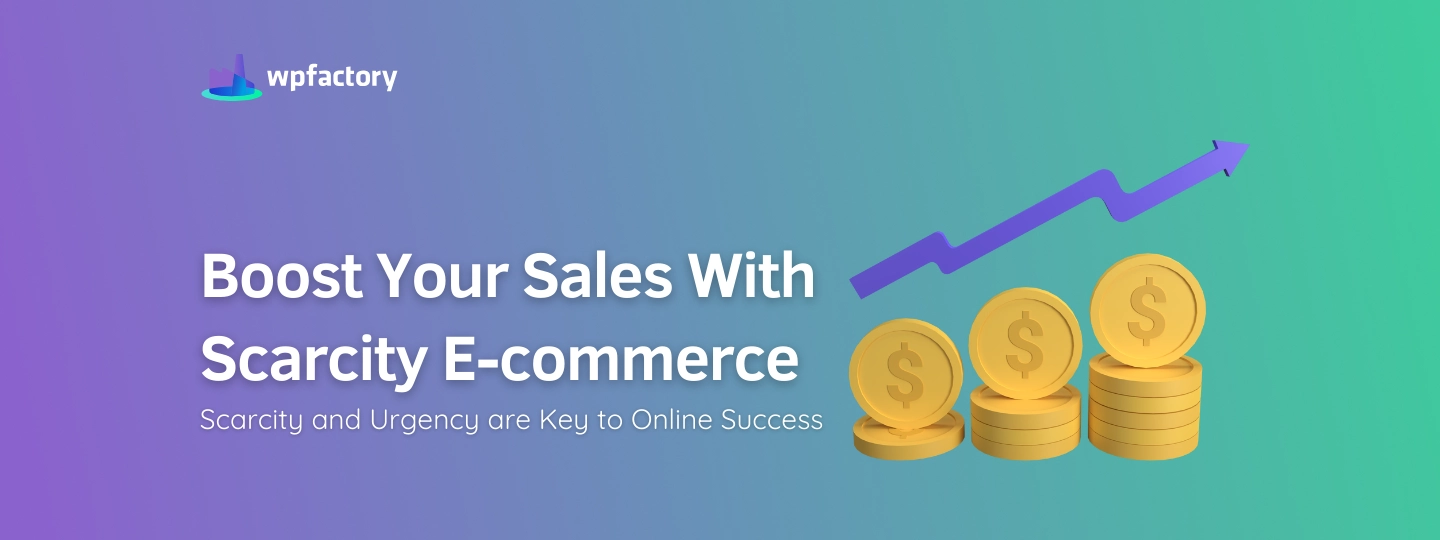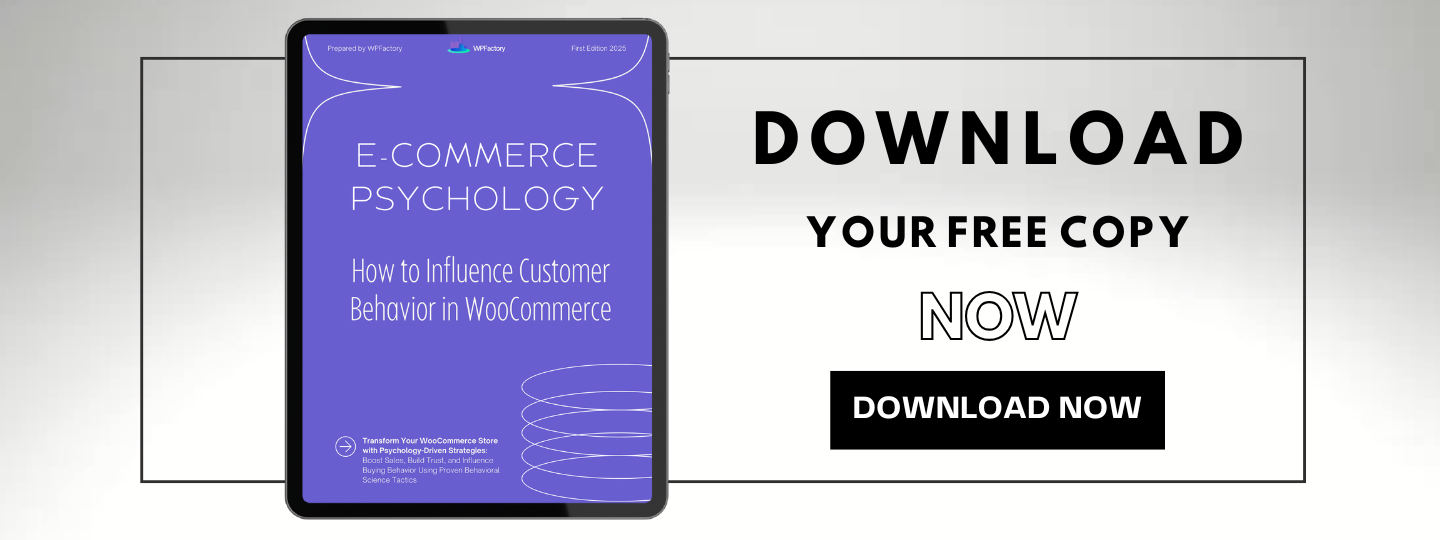Boost Your Sales With Scarcity E-commerce: Scarcity and Urgency are Key to Online Success
Have you heard of the new app that will boost your E-commerce sales by at least 4 times? You are very sure that it will help you achieve your goal of increasing sales, but it’s just too damn expensive. So are you holding off buying it for now? Did you just receive the email that the price is going to increase in a few days? Well, you better buy it before the price increases. Do you want to miss out on the discounted price now? If you were in such a situation when you receive the email that the price is going to go up, would you feel pressurized to buy it? That is called urgency, the seller of the app just created it out of thin air and pressurized you to buy it.
How about when you were shopping online for that new pair of wireless earphones, did you just hold off buying them until the next paycheck? But then all of a sudden you see “Only 3 left”. You then go ahead pull out your credit card and purchase it. If the stock ran out you would not have been able to buy the earphones that you loved. Why did you purchase this product? Because only 3 were left and you felt pressurized to buy it. That is an example of scarcity.
Psychology can be a great marketing lever that you can pull to boost your online sales, in this article I will explain the why and how of psychology so you know how to nudge your customers to take the final step and buy from your store.
Why Do You Need To Use Scarcity and Urgency?
Scarcity and urgency are two age-old selling techniques. They help boost conversions and increase engagement. Urgent situations require us to act fast and scarcity initiates anxiety. This causes us to act quickly. The number one thing that kills E-commerce conversion rates is hesitation. When a customer thinks “I’ll get it later” and navigates away from your store, he is gone. There is a minor chance of the customer coming back but you have most likely lost the battle. The customer will probably have a change of heart, get targeted by ads from competitors or get a better offer from elsewhere. To avoid this “I’ll get it later” attitude you need to add urgency and scarcity to your E-commerce store.
Here are 4 ways to add scarcity and urgency to your online store.
1. Free shipping for a limited time
Customers hate getting surprises and it is important to inform customers clearly of the shipping charges. If customers get surprised with a shipping charge during the checkout process, your cart abandonment rate will shoot up. However, you can use shipping to create a sense of urgency. If you can offer free shipping for a limited time, it can prompt customers to act fast.
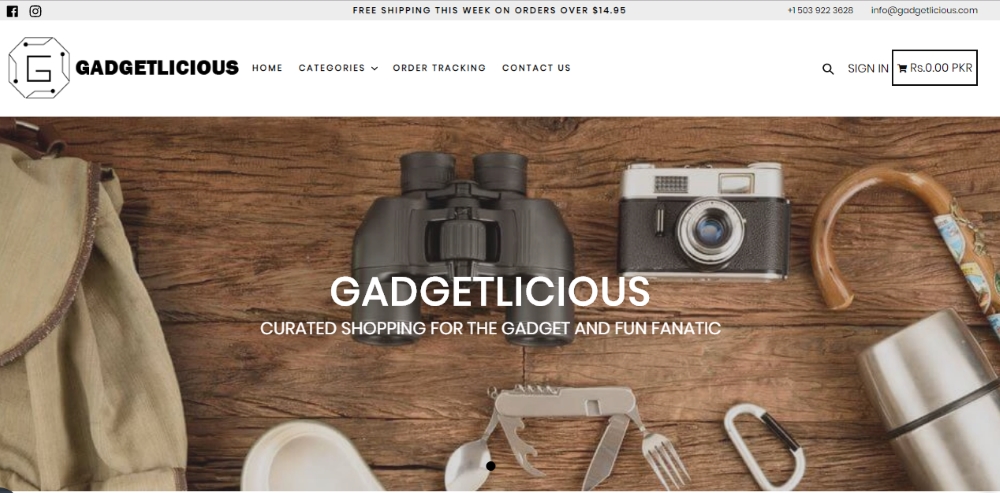
Notice how this store has a notice at the top saying “FREE SHIPPING THIS WEEK ON ORDERS OVER $14.95”. That creates a sense of urgency for visitors.
2. Display low stock notifications
Displaying low stock notifications on your product page is a great way to create scarcity. It makes customers act quickly and keeps them interested in the product. This technique can also be helpful if you find customers are adding items to their wishlist and not purchasing. If you are low on stock you can email customers who added the product to their wishlist saying the stock will run out soon.
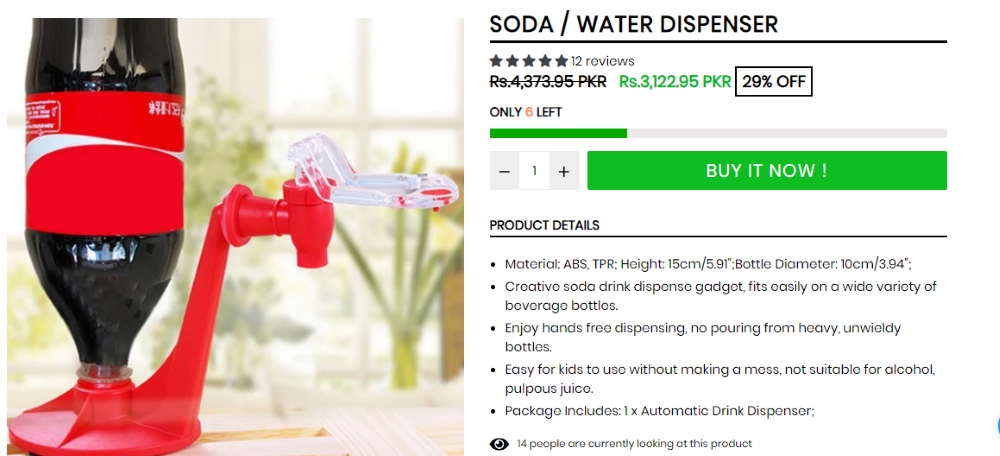
On this product page, you can see only 6 of these are left in stock. If a customer is willing to buy this product it will not give them a chance to leave your website. Also at the bottom, you can see 14 people are looking at the product. Both of these messages will create urgency and scarcity, thereby forcing customers to act fast.
3. Use countdown timers during sales
Often E-commerce stores tend to run sales during certain periods. Letting your customers know that the sale is ending soon is a great way to add urgency to the situation.
Countdown timers help customers visualize the urgency, by reminding them of the time left and ticking it down with every passing second.
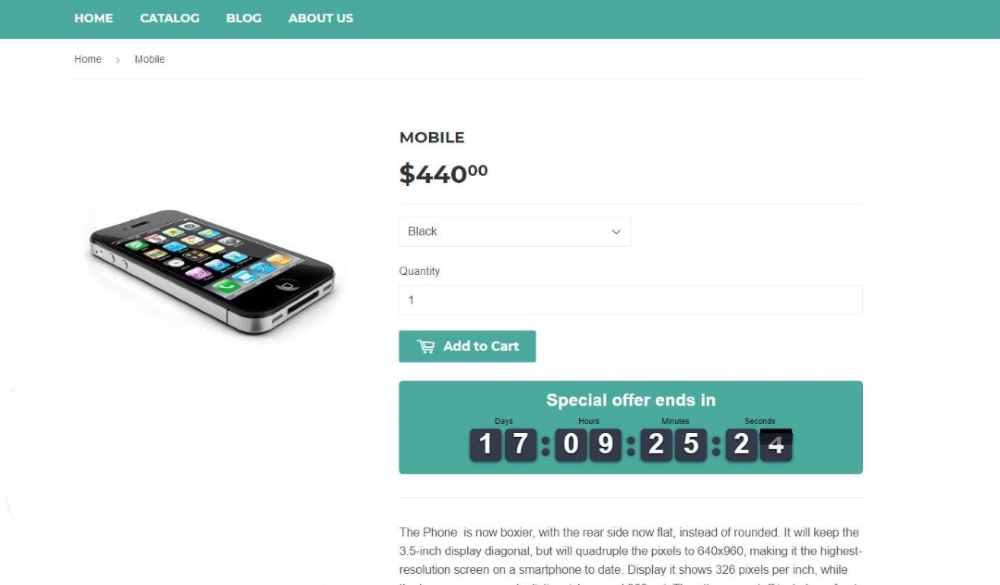
On this sales page, you can see the sale ends in 17 days. It is advisable to add timers when the sale ends in less than a week to create a sense of urgency. There is no point in having a timer if there is a lot of time left for the sale to end.
4. Create FOMO (Fear Of Missing Out)
People tend to follow the actions of others because they think those actions are correct. A good example is if there is a newly opened coffee shop in your area and you see long lines outside it. You probably start thinking you need to try it out. This is called the fear of missing out or FOMO. This technique can be applied to E-commerce stores as well. FOMO tends to create a sense of urgency. We can do this by adding some social proof to our store. You can display recent sign-ups, purchases, and page views as people visit your website.
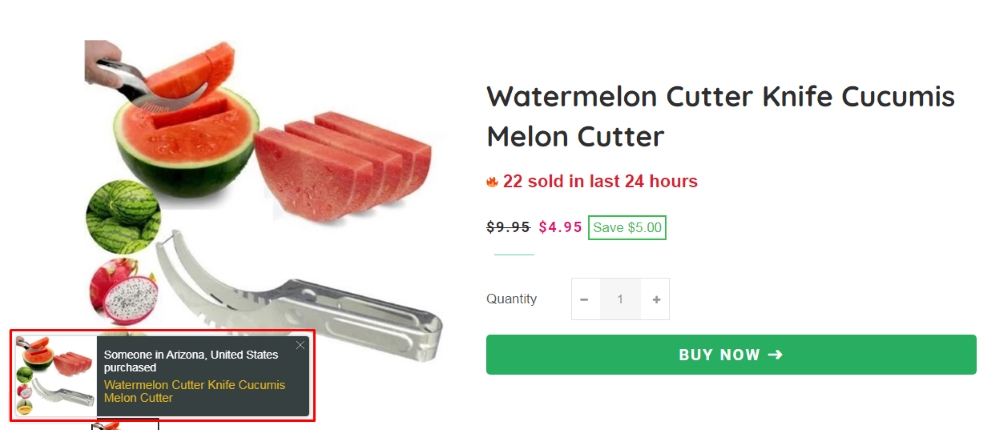
In the above example, you can see in the bottom left of the screen someone from Arizona purchased this product. A great example of social proof and creating the fear of missing out.
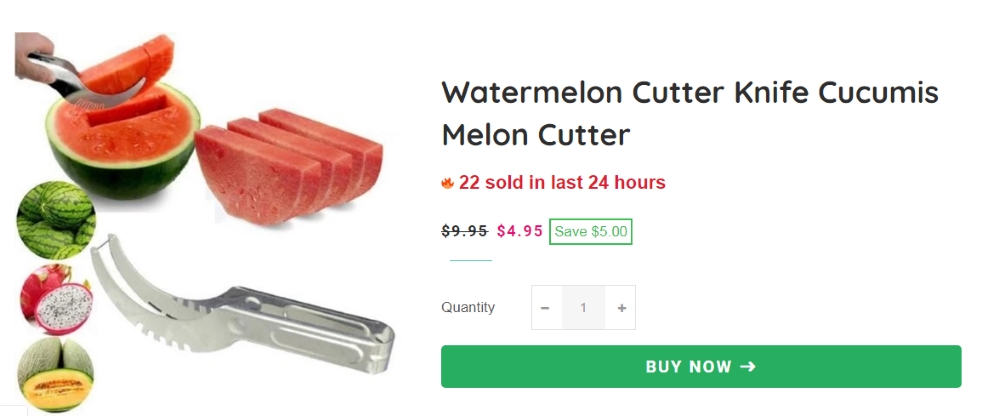
This is another example of social proof. Notice how the 22 sold in the last hour stands out in red.
Scarcity Marketing Examples
Scarcity marketing has proven successful in the fashion industry, Supreme and H&M are two prominent examples.
Supreme, originally a skateboard and clothing brand, has become synonymous with the practice of scarcity marketing. Here’s how Supreme leverages this strategy:
Limited Releases: Supreme drops new products in limited quantities on a fixed schedule (known as “drop days”). This not only creates hype but also a sense of exclusivity, as each item is available for a limited time only.
Collaborations: Supreme often collaborates with other high-profile brands and artists, which adds to the uniqueness and appeal of their products. For instance, collaborations with brands like Louis Vuitton or Nike are highly anticipated and become instant collector’s items upon release.
Cult Following: The scarcity of their products helps cultivate a dedicated fanbase. Fans often line up for hours or even days to get their hands on the latest drops, and the products frequently resell for many times their original price on secondary markets.
H&M, a mass-market retailer, periodically collaborates with luxury fashion designers to create limited-edition collections. These collaborations include:
Exclusive Collections: Designers like Karl Lagerfeld, Alexander Wang, and Giambattista Valli have partnered with H&M to create special collections that are only available for a brief period and in select stores. This creates a luxury shopping experience at a fraction of the price of high-end boutiques.
Marketing Buzz: The announcement of a new collaboration typically generates substantial media buzz, attracting both regular customers and those who may not typically shop at H&M. The launch days often see long queues and the collections usually sell out quickly.
Enhanced Brand Image: These collaborations help elevate H&M’s brand image by associating it with high-end designers. It makes luxury fashion more accessible while maintaining the exclusivity and allure of designer brands.
Both these examples demonstrate how scarcity marketing can be effectively used in the fashion industry to generate demand, create a sense of urgency, and enhance brand perception. This strategy not only boosts sales but also helps in maintaining a high level of consumer interest and engagement.
It’s not only the fashion industry that can leverage this marketing strategy, but it surely is a prominent one.
How to Apply Scarcity and Urgency Tactics in Your WooCommerce Store
Now you’ve understood the concept, how to apply it in your WooCommerce store?
There are numerous tools and plugins that can help you implement this tactic in your store, here we mention just a few:
WooCommerce Waitlist: This plugin allows customers to add out-of-stock items to a waitlist. Once the item is back in stock, customers receive a notification email. This not only helps gauge demand but also builds anticipation and urgency.
WooCommerce Product Countdown: This plugin adds a countdown timer to product pages, which is great for limited-time offers or flash sales. The visible countdown can create a sense of urgency, encouraging customers to buy before time runs out.
Limited Stock Visibility: Display the number of items left in stock when they drop below a certain threshold. This can be configured directly in WooCommerce settings under Inventory options—showing customers that only a few items are left can spur them to make a purchase.
Back In Stock Notifications: Allow customers to sign up for alerts when out-of-stock items become available again. This not only keeps the interest alive but also creates a sense of scarcity and demand.
Flash Sales: Use time-limited offers to drive traffic and sales. You can set up flash sales for specific products and use plugins like WooCommerce Product Countdown to display the time remaining until the sale ends.
Exclusive Pre-orders: For new products, setting up a pre-order system can create anticipation and exclusivity. You can use a plugin like WooCommerce Pre-Orders to allow customers to order products before they are released.
Seasonal or Themed Promotions: Aligning promotions with seasons or events (like Black Friday or back-to-school) and offering limited-time products can create a natural scarcity.
Conclusion
While it is important to use these two techniques, you don’t want to use false urgency and scarcity on your website. For example, there are online stores that run a countdown timer for an item that is on sale. But the timer resets every time it hits zero. You might get a few extra sales with false urgency and scarcity but in the long run, it will be damaging to your brand. You can also kiss repeat customers goodbye.
Another thing to keep in mind is to display urgency and scarcity prominently on your website. If, for example, you are offering free shipping for a limited time and you do not mention that clearly on your website, how will your customers find out?
Want to understand why scarcity works so well? Get your free copy of How eCommerce Psychology Drives WooCommerce Conversions and learn the science behind what gets people to click ‘Buy’.
